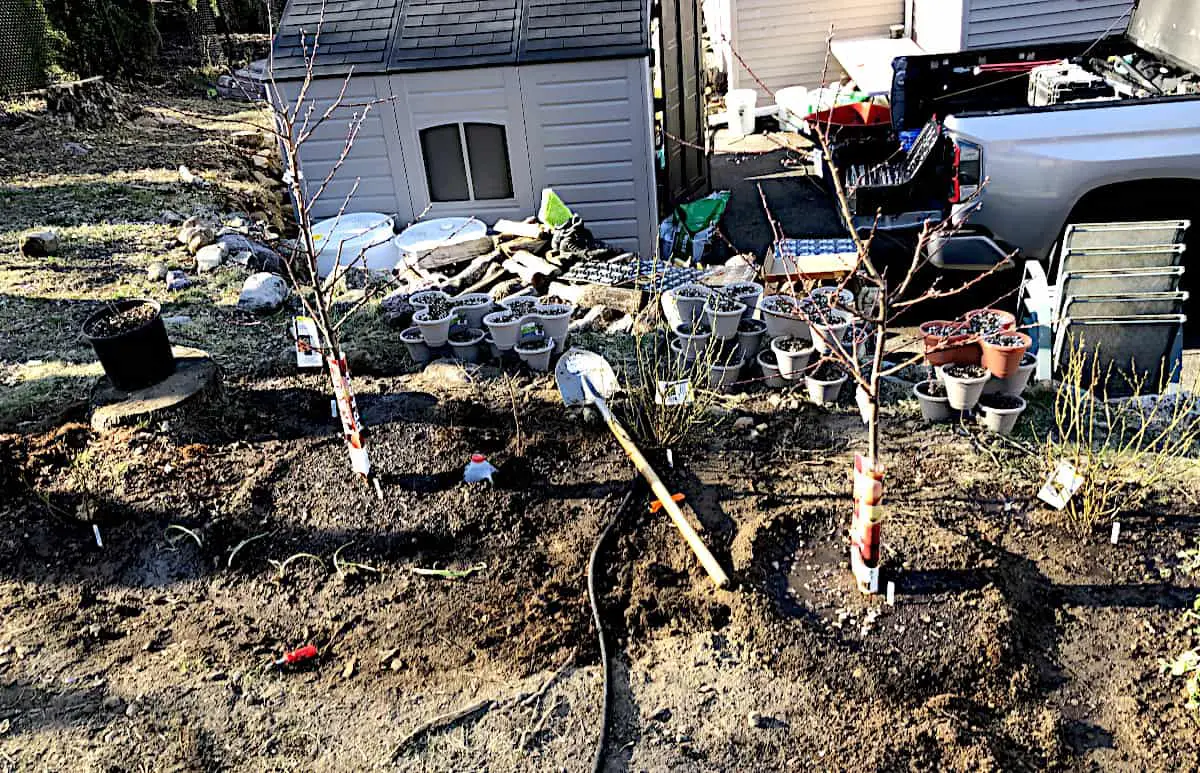There are many things to look out for when purchasing a new fruit tree for your growing space. Remember that it might be years before the tree bears fruit. A healthy tree will grow well and reward your patience with delicious fruit. If you get an unhealthy tree, it will give you headaches and regrets instead of sweet and delicious fruit. Do not waste your time and money, and let me walk you through what to consider and inspect when purchasing a fruit tree.
Pick a high-quality healthy tree and look for these signs
- Choose a tree with a clean, healthy bark without any blemishes or wounds.
- Inspect the tree for insect damage, mechanical injury, or dead wood.
- Inspect the structure of the tree. It should have a straight trunk, as the trunk will not straighten up as it grows. Pick a tree with a strong central trunk and evenly distributed branches around it.
- The branches and twigs should be flexible and should not snap when gently bent. Branches should be well-spaced and firmly attached.
- Look for a well-developed crow, with green leaves and good dark green color if the tree is not in dormancy.
- A healthy tree should have plenty of new buds, and leaves of normal leaf size.
- Inspect the surface of the soil if the tree is in a pot or balled. The surface of the soil should have no frass, sawdust, or decayed material on it or beneath it.
- A beautifully looking tree without blemishes is a sign of strong and healthy well-being.
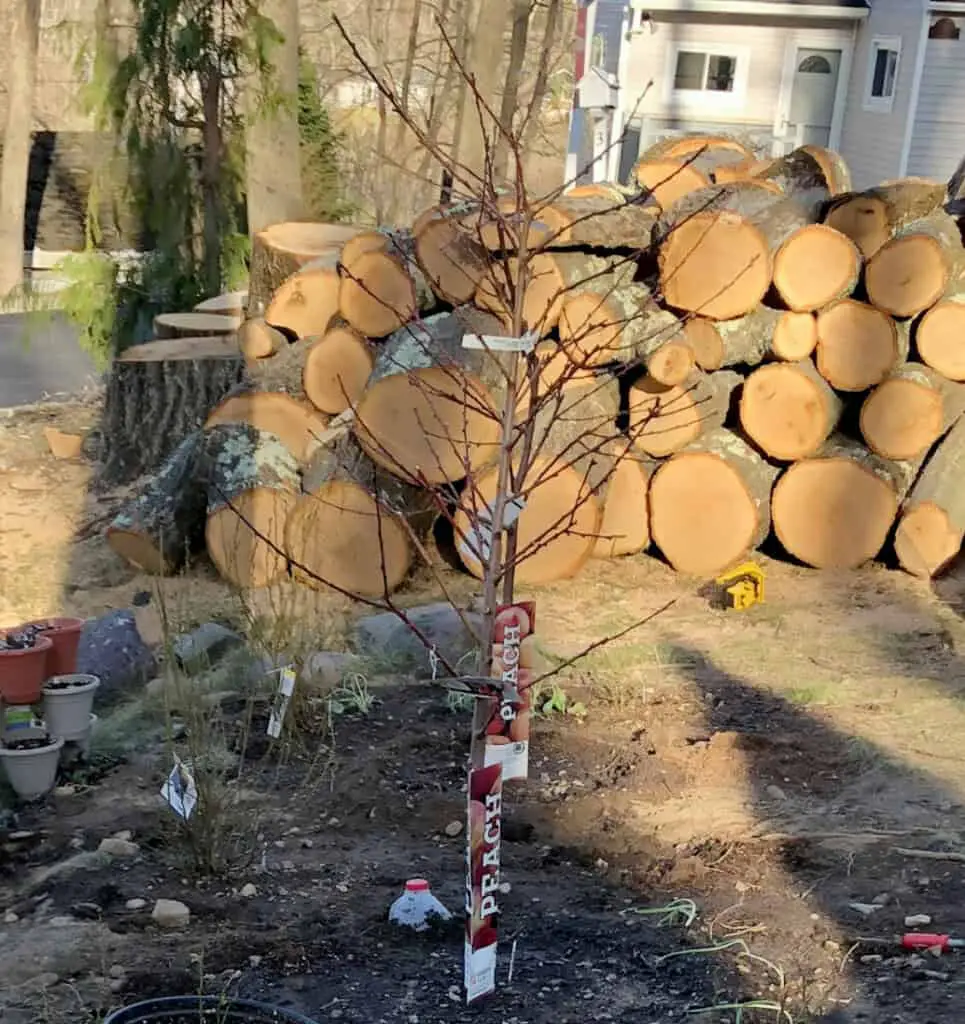
What to look for in a healthy tree
Appearance: A healthy tree should have a beautiful and healthy appearance. The tree should be straight.
Leaves: A healthy tree should have plenty of green healthy leaves of normal size and shape and without holes.
Bark: Bark should not have any spots of blemishes, or wounds. It should be fuzz and mold-free.
Branches: Branches should be well attached, playable when bent.
The trunk: The trunk should be free of any signs of insects and without any cavities or bruises.
What structure should a healthy tree have
A well-structured tree should have healthy playable roots, a straight trunk without blemishes, branches evenly spread, and healthy green leaves without any discoloration, holes, or curling. A strong and healthy tree should have a well-balanced structure.
What trees to avoid
Avoid the trees that do not look healthy. If the tree already looks stressed or unhealthy it will not grow properly or might need a lot of attention and time to make things right. Unless you are an experienced tree grower, avoid these kinds of trees.
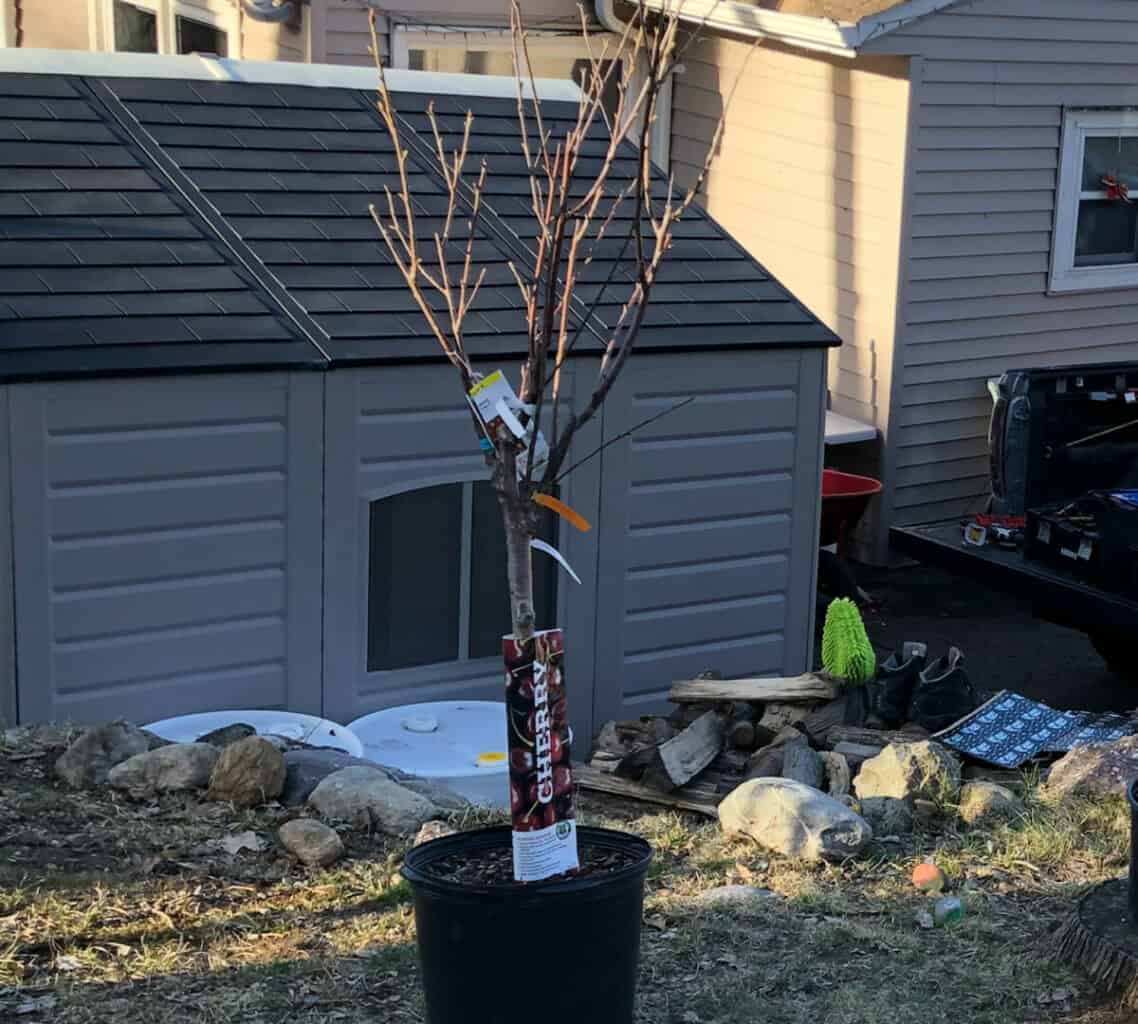
Avoid trees with signs of leaves discoloration, with any browning or yellowing of leaves. Also avoid trees with holes and curling on leaves it is a sign of some stress, disease, or insect.
Avoid the tree if the bark on the branches and the trunk are discolored, fuzzy, or moldy.
The trees with crooked trunks should be avoided too. As the tree grows the trunk will not straighten up and the whole balance of the tree as it matures will be questionable.
Avoid the tree with dead, dry, or moldy branches. Also, avoid trees with stem injury as the open would weaken the tree and attract disease and insects.
TIP 1: Look under the soil surface as well! I once bought a beautifully looking peach tree, with great structure and healthy looks. At planting, thankfully, I noticed a fuzz around the base of the tree, and as I dug a bit and touched the tree trunk, the trunk literary caved in and was mushy. As I dug deeper into the soil, I found a borer chewing on the tree. The borer wasn’t noticeable from the surface. I had to dig under surface and around the trunk to notice the source of the problem. Since then, I always inspect the soil around the trunk and I also uncover the soil around the trunk to ensure no borers are present. I returned the tree and picked another one. The other tree was not as stunning on the outside as the other but much healthier that’s for sure. Look for hidden problems as well like borers, root problems, and holes in the bark. Inspect the roots if possible. If not possible to inspect the root system when purchasing, inspect it as you plant the tree. Some borers are hidden in the soil around the root ball, inspect the soil as well before you plant the tree. It was my first fruit tree purchase, and what a lesson I have learned! It was not a bad experience, it was a learning experience, which I now appreciate. I attached a photo of the gamaged tree below, along with the couase of the damage.
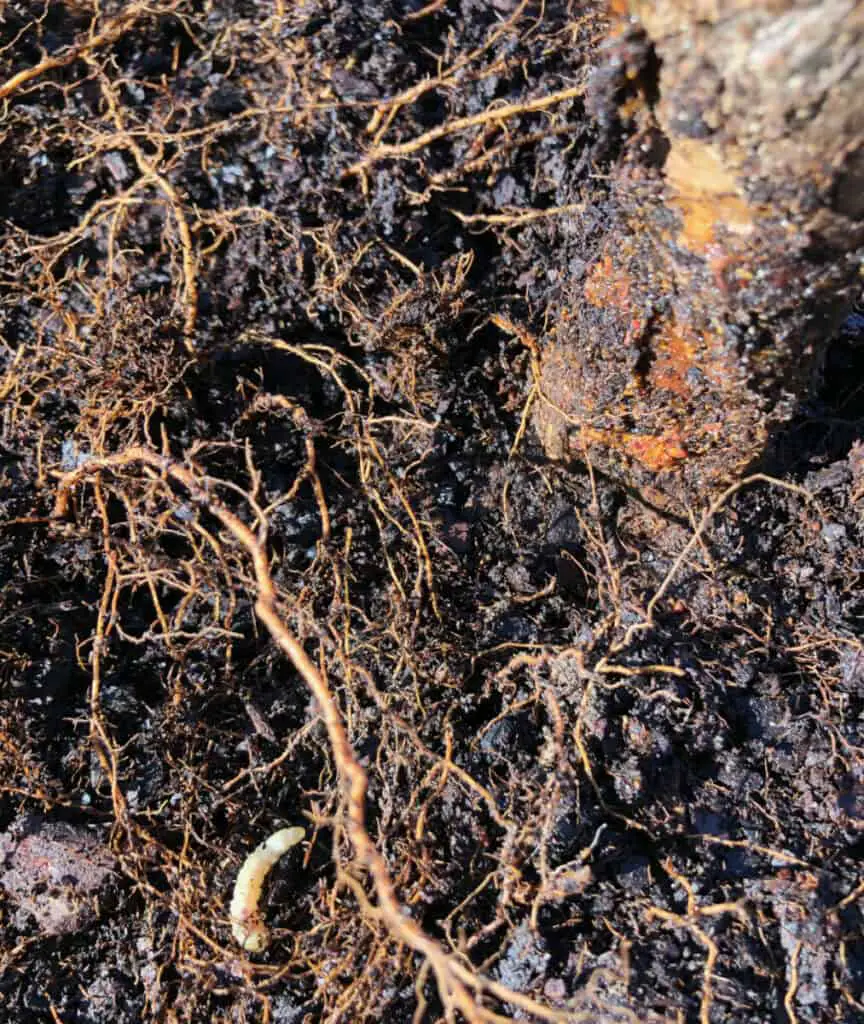
TIP 2: I also bought a cherry tree with problematic bark. It was a cherry tree with 4 different kinds of cherries grafted into one trunk. Two branches had open wounds that did not heal well after in my opinion, wrong pruning. As a first-time buyer who just wanted a tree no matter what, I gave in and purchased it as there was no better cherry available. The tree is growing but the problem is not resolved and the same branches still look unhealthy with opened wounds. I plan to remove those branches. The lesson I have learned is that never gave in and never get an unhealthy tree just so you have one. Rather buy a healthy tree somewhere else, or wait for the next tree shipment and get a healthy one, even if it is another variety than what you wanted.
It is important to select the right tree for your planting location. There are things to consider when picking what kind of fruit tree you should get, like your hardiness zone, the tree’s required chill hours, the size of the tree pollination, and such. I have written an article that will lead you to the best tree for your space. Please visit How to select the right tree for your location.
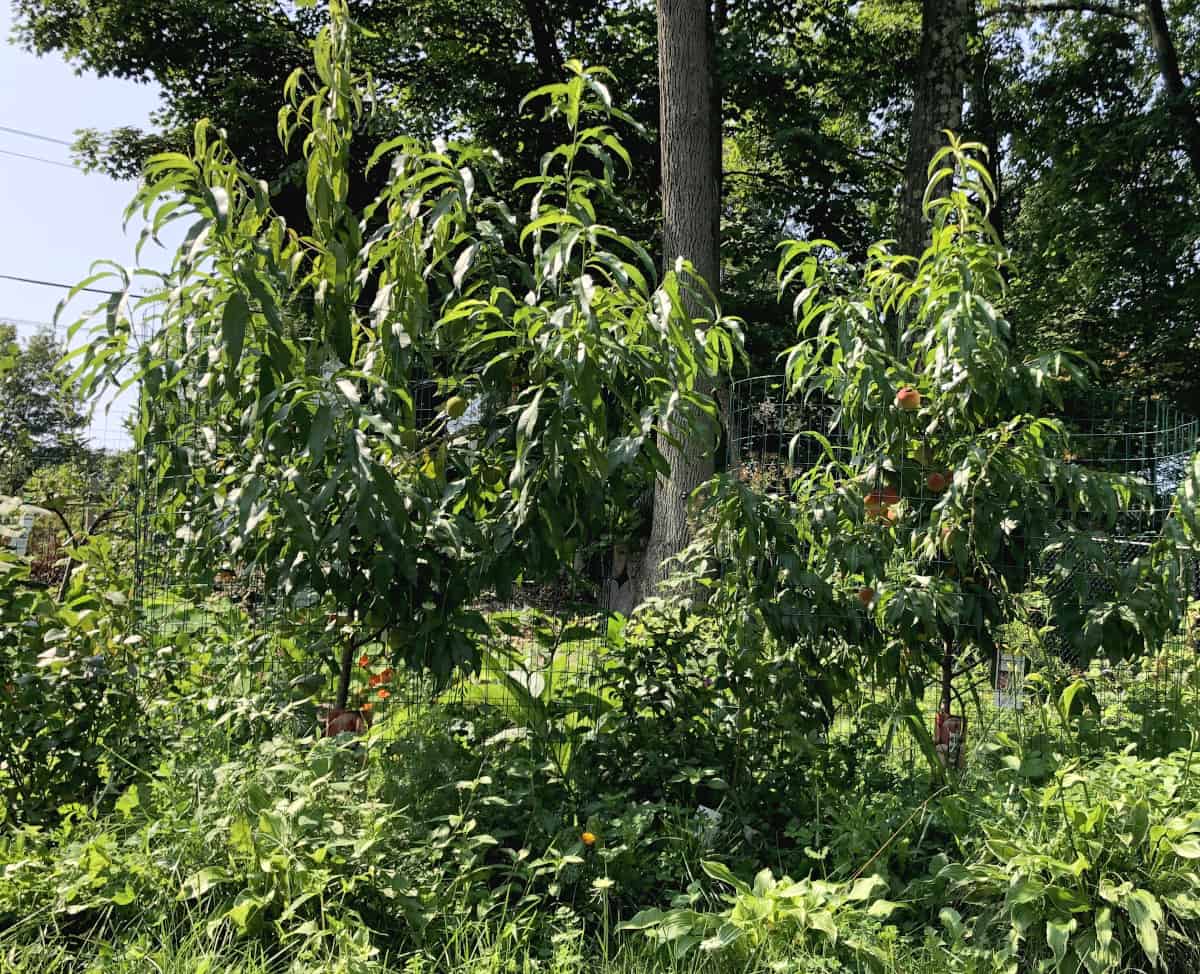
When buying a tree, consider when and how you should plant it. Buy the right trees for the right time it needs to be planted. Read When to plant fruit trees, and How to plant fruit trees.
